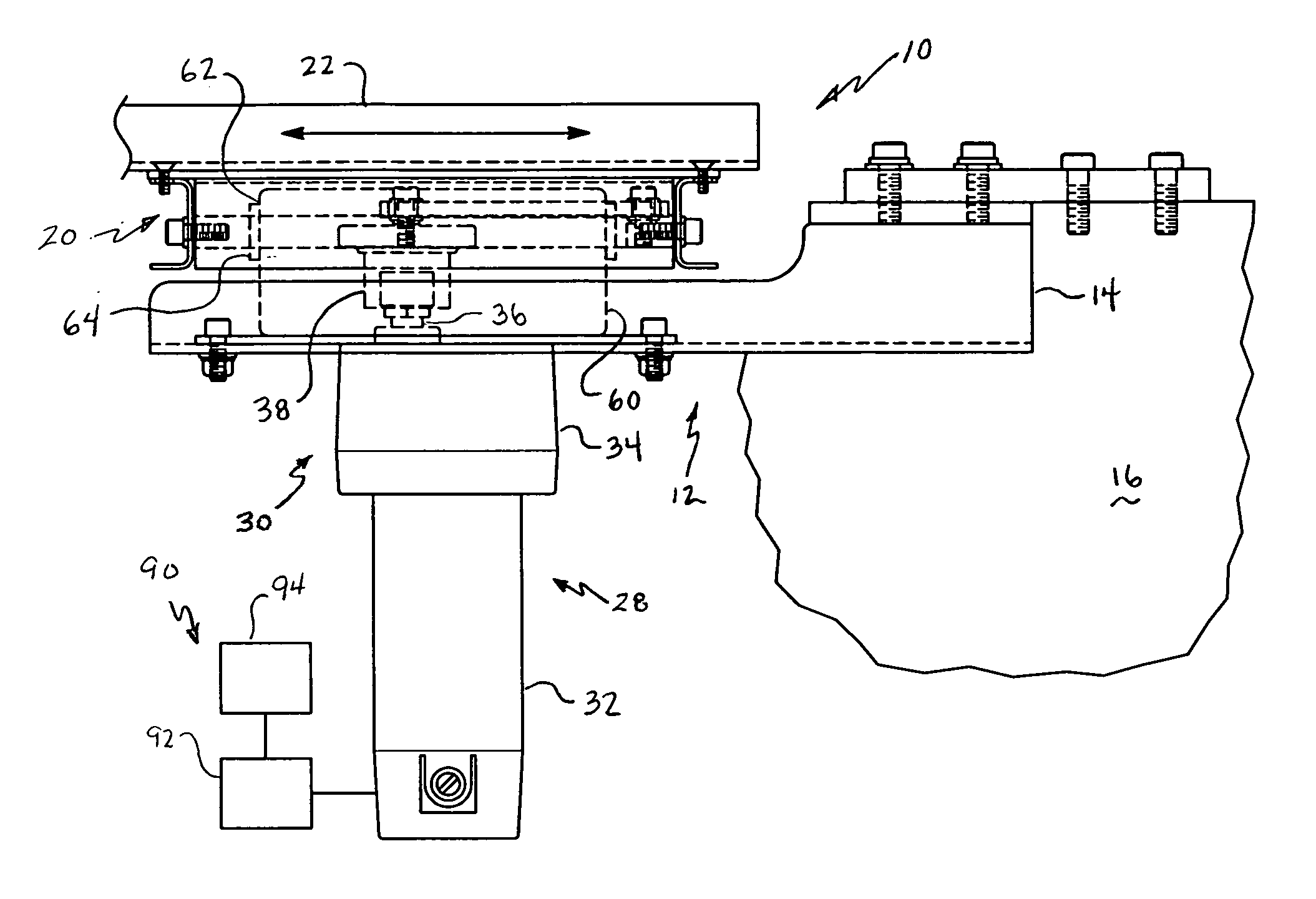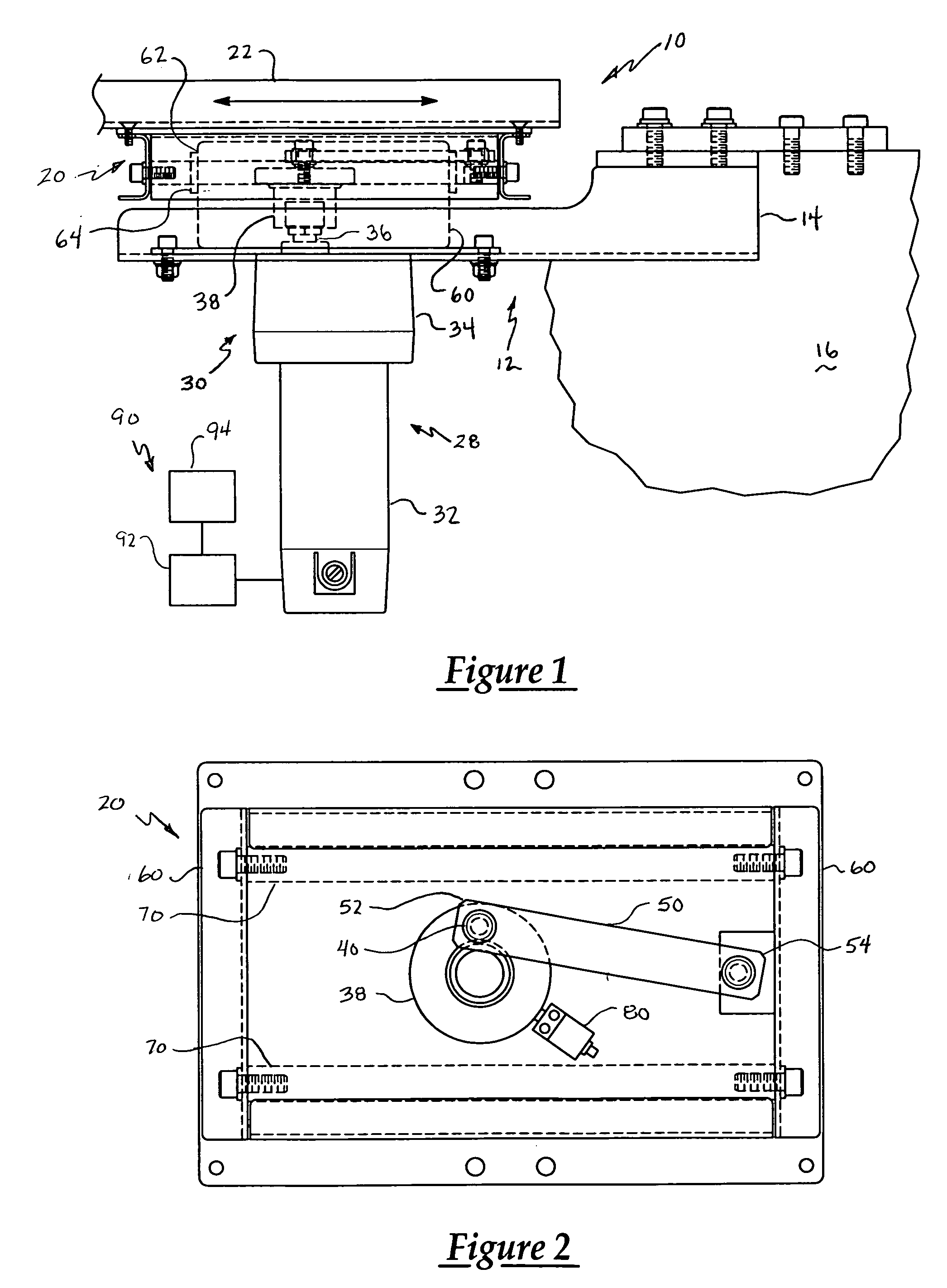Shaker conveyor assembly having an electronically controllable stroke speed
a conveyor and electronically controllable technology, applied in the direction of conveyor parts, conveyors, jigging conveyors, etc., can solve the problems of increasing the maintenance cost of stamping operation, and belts are often cu
- Summary
- Abstract
- Description
- Claims
- Application Information
AI Technical Summary
Benefits of technology
Problems solved by technology
Method used
Image
Examples
Embodiment Construction
)
[0023] One embodiment of the shaker conveyor assembly of the present invention is generally indicated at 10 in FIGS. 1 through 3, where like numerals are used to designate like structure throughout the drawings. The shaker conveyor assembly 10 may be employed in any number of applications and neither the preceding discussion nor the description of the invention that follows should be interpreted as limiting the present use of the invention.
[0024] Referring now to FIG. 1, the conveyor assembly 10 of the present invention includes a stationary base, generally indicated at 12. It should be appreciated by those having ordinary skill in the art that due to the wide variety of possible applications and operating environments that the present invention may be incorporated into any type of mounting that rigidly supports the conveyor assembly 10. For example, the stationary base 12 may be a mounting bracket 14 (as illustrated in FIG. 1) or the like that further secures the conveyor assembl...
PUM
 Login to View More
Login to View More Abstract
Description
Claims
Application Information
 Login to View More
Login to View More - R&D
- Intellectual Property
- Life Sciences
- Materials
- Tech Scout
- Unparalleled Data Quality
- Higher Quality Content
- 60% Fewer Hallucinations
Browse by: Latest US Patents, China's latest patents, Technical Efficacy Thesaurus, Application Domain, Technology Topic, Popular Technical Reports.
© 2025 PatSnap. All rights reserved.Legal|Privacy policy|Modern Slavery Act Transparency Statement|Sitemap|About US| Contact US: help@patsnap.com



